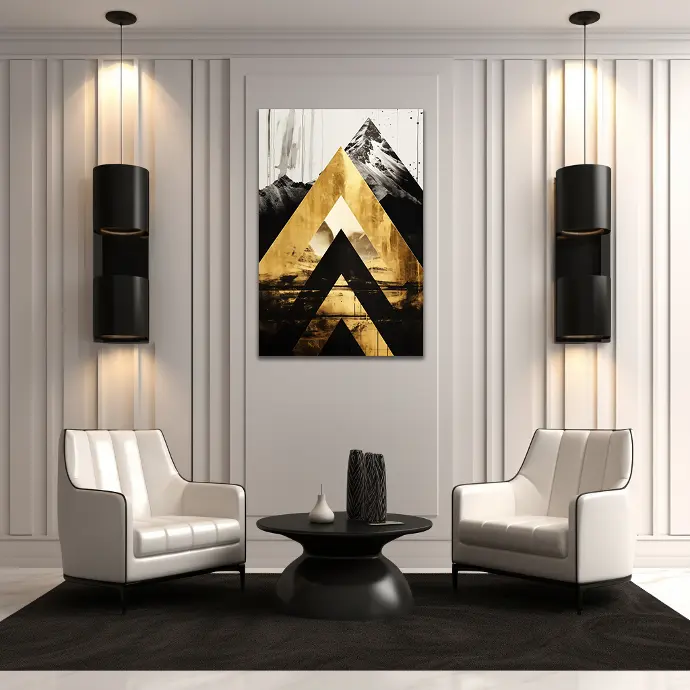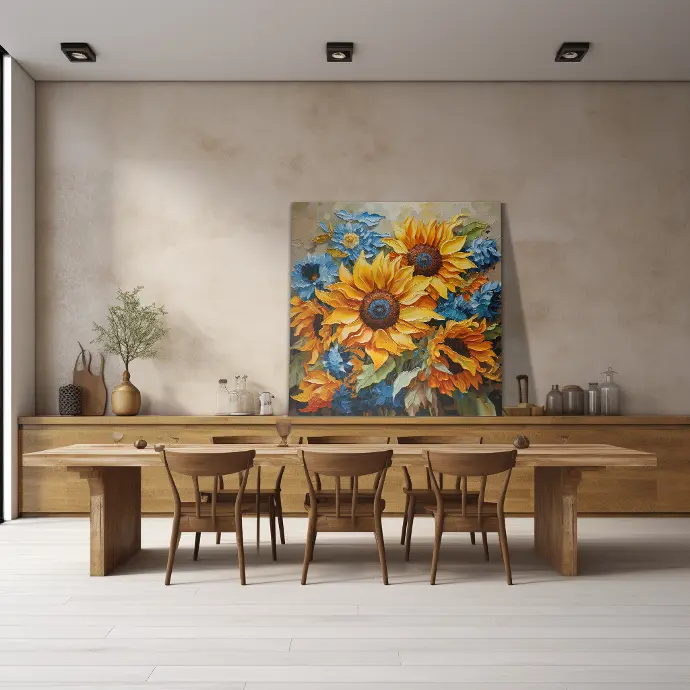How to Choose the Right Size Wall Art
Searching for original artwork to take your home decorating to the next level? You may know your style—and you may have reckoned with your budget—but don’t forget to take size and shape into account. A work of art in the right dimensions and orientation can anchor a room, while a work in the wrong size can look like an afterthought. If you find yourself staring at bare walls unsure of where to begin, read our 5 tips and tricks for finding that perfect fit.

1. Size
In terms of size, aim to fill about two-thirds to three-fourths of your available wall space. If you are looking to hang a focal point above a piece of furniture—such as your couch, headboard, or dresser—follow the same proportions and find a work two-thirds to three-fourths smaller than your furniture. For instance, if your headboard is 60 inches wide, you should find a work around 40 to 45 inches wide.
When in doubt, go big: If you’re buying a work without measurements on hand, it’s typically safer to err on the larger side. You want your artwork to stand out and complement your space—empty wall space can overwhelm a work that is too small. Imagine that your artwork connects the dots in your room, tying together the couch, lamps, and other works of art—a piece that is too small will float between the dots, rather than connect them into a cohesive space.
2. Orientation
When deciding on orientation, consider the shape of your available wall space—do you have a sliver of vertical space between two windows? Go for a work in portrait orientation to create a sense of height and openness. Is there a yawning expanse of blank wall space behind your dining room table? Go horizontal, or landscape, to fill the visual field.

3. Placement
In gallery spaces, two-dimensional works are typically hung so that the center of the piece falls at eye level (56 to 60 inches from floor). This standard is a useful rule of thumb for hanging works on blank walls.
When there’s a couch, headboard, fireplace mantel or other piece of furniture involved, you will need to make sure the work has some breathing room while keeping the objects cohesive. Generally, this means hanging the work about 4 to 12 inches above the top of the piece of furniture. For a work serving as a focal point on a blank wall behind your dining room table, follow the same four to 12 inch rule.

4. Salon Wall
If your budget is too small for an oversized work or you have fallen in love with some smaller pieces, don’t fret! Instead, consider filling your wall space by grouping multiple works together. Works of equal size can be hung as a grid, but don’t be afraid to cluster works of different sizes into a salon wal. In general, hang larger artworks on a salon wall two to three inches apart and small works one and a half to two inches apart.